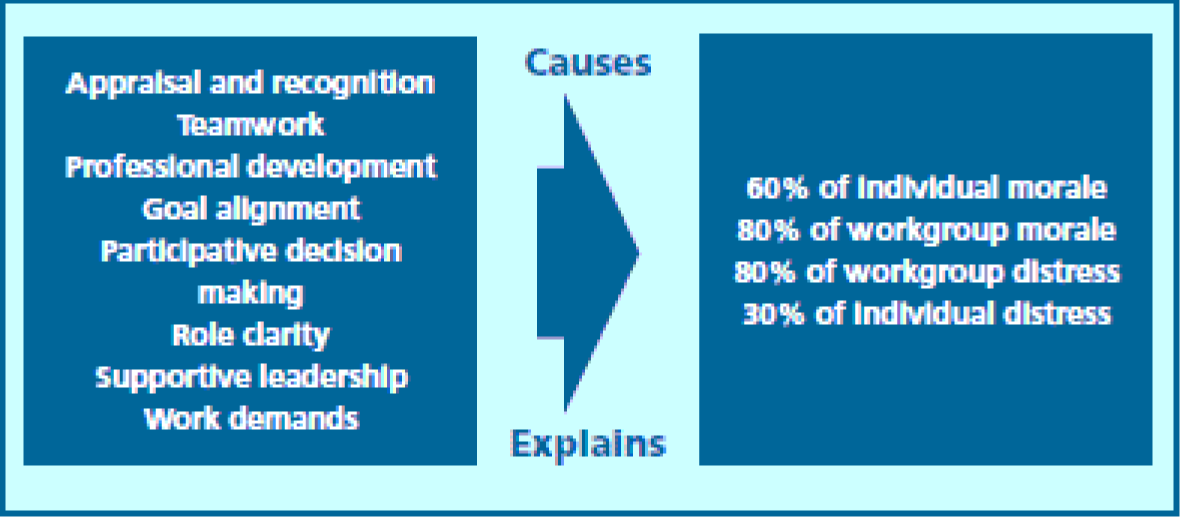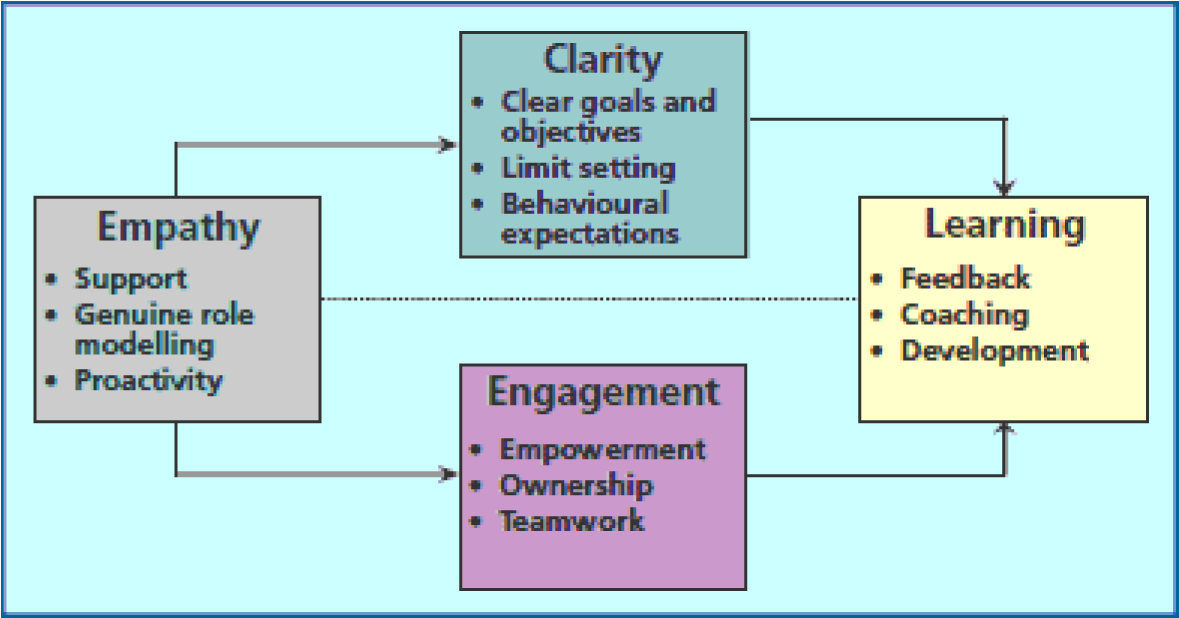L
eadership styles as the key factor for workplace harmony
As a Psychologist, business owner, and manager for over thirty years I have always been involved in team development. My experience ranges from working in public health and government settings, universities and private companies including my own. The most costly event in any business is not addressing issues of workplace bullying. Productivity is affected due to poor staff morale and frequent staffing turnover. Mental health is in some cases can be permanently affected. The usual attempts to manage hostile work situations has lead not too infrequently with the person bullied leaving a company. More recently the focus has been directed towards leadership styles as the key factor for workplace harmony. An excerpt from research by Dr Peter Cotton and Dr Peter Hart below outlines the importance of strong and empathic leadership styles as a way to reduce the risk of such aggressive behaviours.
K
ey Drivers of Well-being and Organisational Performance
Given that employee morale significantly influences a range of important workplace outcomes, what are the major determinants of morale? Key workplace drivers of employee morale have been found to include supportive leadership (e.g., empathy, approachability, support, role modelling behaviours, delegation and proactive engagement with at-risk staff) and a positive and engaging workgroup climate. Indeed, as shown in Figure 1,

Figure 1. Key Drivers of staff wellbeing
these factors have typically been found to explain approximately 60 percent of the variation in individual employee morale, and 80 percent of workgroup level morale¹.
Based on extensive research and evaluation of leadership and workgroup development programs, our climate framework has been reformulated into a four-factor model, as shown in figure 2.

Figure 2. Four factor model of key cultural elements underpinning work team climate
which is focused on delineating the cultural pillars that underpin the work team environment. Ongoing organisational health research suggests that these four elements determine the overall quality of the team environment and significantly influence employee motivation, wellbeing, discretionary effort and customer experience.

W
orkplace Bullying Information Links
….
- Australian Human Rights Commision workplace-bullying-violence-harassment-and-bullying-fact-sheet https://www.humanrights.gov.au/workplace-bullying-violence-harassment-and-bullying-fact-sheet
- Reach Out Bullying Types https://au.reachout.com/everyday-issues/bullying
- Bully Zero Australia clearly outlines unacceptable behaviours http://bzaf.org.au/workplace-bullying/
- Also, another interesting article that discusses “bystander apathy” https://www.psychologytoday.com/blog/the-social-thinker/200911/why-don-t-we-help-less-is-more-least-when-it-comes-bystanders
References
Cotton P., & Hart P. M. (2002). The management of work demands in Victorian schools.Melbourne: Department of Education, Employment and Training.
Cotton P., & Hart P. M. (2003). Occupational wellbeing and performance: A review of Organisational Heath research. Australian Psychologist, 38(2), 118-127.
Hart P. M. (1999). Predicting employee life satisfactions: A coherent model of personality, work and non-work experiences, and domain satisfactions. Journal of Applied Psychology, 84, 564-584.
Hart P. M., (2011). What does it take to achieve sustainable organisational improvement? Manuscript in preparation.
Hart, P.M., Caballero, C.L., & Cooper, W. (2010, July). Understanding Engagement: Its Structure, Antecedents and Consequences. Paper presented at the International Academy of Management and Business Summer Conference, Madrid.
Hart P. M., & Cooper C. L. (2001). Occupational Stress: Towards a more integrated framework. In N. Anderson, D. S. Ones, H. K. Sinagal & C. Viswesvaran (Eds.), Handbook of Industrial, Work and Organisational Psychology (Vol. 2, p.93-114). London: Sage.
Hart P. M., & Cotton, P. (2001). Organisational correlates of fair and reasonable treatment and counterproductive behaviours. Office of Public Employment, Victoria.
Hart P. M., & Cotton P. (2003). Conventional wisdom is often misleading: Police stress in an organisational health framework. In M. F. Dollard, A. H. Winefield & H. R. Winefield (Eds.)Occupational stress in the service professions (p.103-138). London: Taylor and Francis.
Hart P. M., Tan J., Sutherland, A., Wellington, C., & Cotton P. (2011). Leading Teams: Working Well Evaluation Report. WorkCover Authority of New South Wales.


